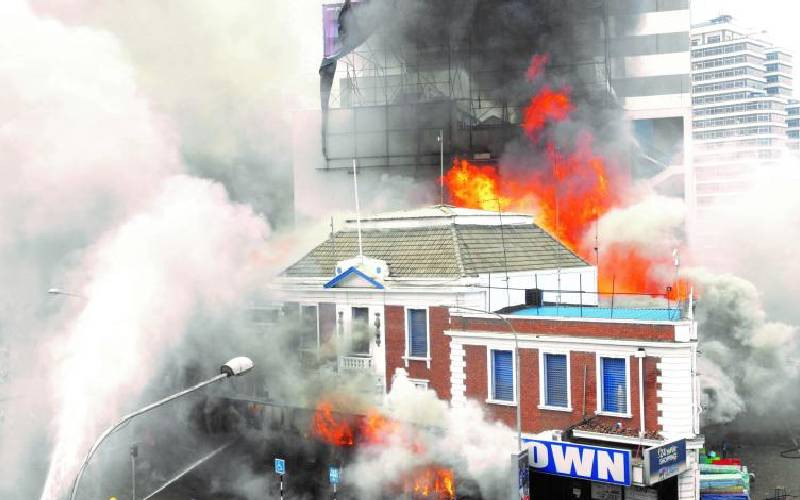Save for occasional visitations of such extremes as the currently anticipated El Nino, Kenya enjoys a perfectly uninterrupted 12-month 24-carat conference weather regime; in the process, endearing herself to international conference organisers for top-notch events.
This month, the 10th World Trade Organisation (WTO) Ministerial Conference will be held in Nairobi; while just a few days ago, the Pope, the immensely influential head of the worldwide Catholic communion, visited Kenya on his Africa tour.
Next year, again for the first time in Africa, Kenya will host the Tokyo International Conference on African Development (TICAD).
Not too long ago, Multichoice’s Africa media excellence awards event took place in Nairobi. Before then, the US Government-spearheaded the Global Entrepreneurship Summit (GES) held in Kenya that was graced by US President Barack Obama.
Every month, there are very many, but hardly publicised conferences involving regional and international organisers and audiences in Kenya.
Unfortunately, no central mechanism has thus far been established to track how much traffic Kenya’s Meetings, Incentives, Conferences and Exhibitions (MICE) sector commands. Neither, as far as I am aware, do we have a systematic way of mapping the hospitality preferences of international conference organisers and attendees in order to tailor our MICE products and services accordingly. On the whole, Kenya, over the years, has clearly carved her niche in the conferencing, summits and events sector.
What remains is to fine-tune the list of options on offer in order to both enrich and expand an already thriving enterprise. To make the most out of Kenya’s MICE offering, even with existing facilities, a number of measures are necessary.
One, as much as we train hundreds in hospitality, it is necessary to aim at enriching our conferencing experience by creating courses that specifically cater to conferencing as a professional career. In the past, we have treated conferencing as a side serving of the mainstream hospitality industry.
Yet the MICE stable comes with its own characteristics that demand exclusive skills, sensibilities and sensitivity. Two, we need to grade and accredit our conferencing facilities afresh. Our hotel sub-sector has a well-defined Star accreditation system.
This system largely emphasizes the food, beverage and accommodation side of our hospitality. Yet the truth is that MICE in general and conferences in particular require a completely different set of apparatus and approach, both physical and otherwise.
It would be more useful to gauge and then grade MICE-bound facilities separately from other hospitality facilities be they under the same roof.
Moreover, depending on design and related factors, some spaces in our MICE venues are better suited for exhibitions while others are more conducive as seminar and conferences quarters.
Three, Kenya is ripe for a deeper MICE oversight regime. By oversight I mean ensuring that the highest standards are set and kept, and more critically, relevant industry data is gathered, analysed and synthesised for proper planning.
Again, based on the data analysed, the oversight effort should readily indicate what kind of training, marketing methods and accreditation would favour Kenya’s MICE sector the most.
The intelligence accruing from such a pursuit will fortify Kenya’s MICE policies and maximize economic gains from the sector.
It would be myopic to ignore the invaluable capital created by impressions of Kenya created through MICE.
Those that leave Kenya after events, seminars, exhibitions and conferences with good testimonies of the country naturally become our Kenya brand ambassadors. They sell Kenya and her beauty and bounty to others back home.
They also offer would-be visitors, both normal tourists and conferences organizers as well as attendees a reason to consider Kenya as a preferred destination of choice. Time to publish a comprehensive off and online directory of Kenya’s MICE sites has come.
Such a databank should seek to register all MICE facilities across Kenya according to capacity, location, range of available equipment and services as well as distance from key facilities and conveniences such as airstrips, hospitals banks and so on.
Yes, traditional tourism hinged purely on sightseeing, bush and beach has its allure but the MICE alternative is the crème de la crème of the tourism sector.
Thankfully, Kenyans are not short of the ingenuity required to fashion MICE action at the beach, in the bush or indeed in between business and sightseeing.
With a little more creativity and diligence, Kenya’s MICE sector is ripe for big things.
 The Standard Group Plc is a multi-media organization with investments in media
platforms spanning newspaper print operations, television, radio broadcasting,
digital and online services. The Standard Group is recognized as a leading
multi-media house in Kenya with a key influence in matters of national and
international interest.
The Standard Group Plc is a multi-media organization with investments in media
platforms spanning newspaper print operations, television, radio broadcasting,
digital and online services. The Standard Group is recognized as a leading
multi-media house in Kenya with a key influence in matters of national and
international interest.
 The Standard Group Plc is a multi-media organization with investments in media
platforms spanning newspaper print operations, television, radio broadcasting,
digital and online services. The Standard Group is recognized as a leading
multi-media house in Kenya with a key influence in matters of national and
international interest.
The Standard Group Plc is a multi-media organization with investments in media
platforms spanning newspaper print operations, television, radio broadcasting,
digital and online services. The Standard Group is recognized as a leading
multi-media house in Kenya with a key influence in matters of national and
international interest.









